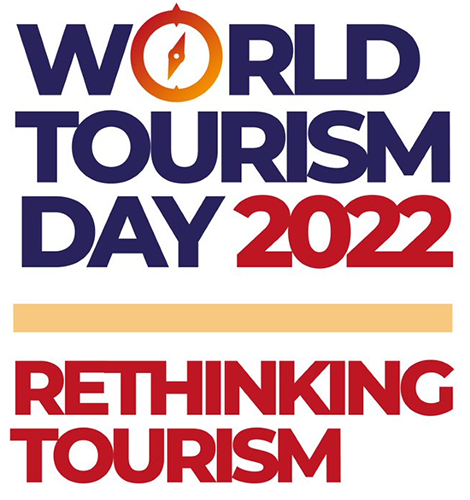International tourism continued to show strong signs of recovery, with arrivals reaching 57% of pre-pandemic levels in the first seven months of 2022.
According to the latest UNWTO World Tourism Barometer, international tourist arrivals almost tripled from January to July 2022 (+172%) compared to the same period in 2021. This means the sector recovered almost 60% of pre-pandemic levels. The steady recovery reflects strong pent-up demand for international travel as well as the easing or lifting of travel restrictions to date (86 countries had no COVID-19-related restrictions as of 19 September 2022).
UNWTO Secretary-General Zurab Pololikashvili said: “Tourism continues to recover steadily, yet several challenges remain, from geopolitical to economic. The sector is bringing back hope and opportunity for people everywhere. Now is also the time to rethink tourism, where it is going, and how it impacts people and the planet.”
An estimated 474 million tourists travelled internationally over the period, compared to the 175 million in the same months of 2021. An estimated 207 million international arrivals were recorded in June and July 2022 combined, over twice the numbers seen in the same two months last year. These months represent 44% of the total arrivals recorded in the first seven months of 2022. Europe welcomed 309 million of these arrivals, accounting for 65% of the total.
Europe and the Middle East Lead Recovery
Europe and the Middle East showed the fastest recovery in January-July 2022, with arrivals reaching 74% and 76% of 2019 levels respectively. Europe welcomed almost three times as many international arrivals as in the first seven months of 2021 (+190%), with results boosted by strong intra-regional demand and travel from the United States. The region saw the particularly robust performance in June (-21% over 2019) and July (-16%), reflecting a busy summer period. Arrivals climbed to about 85% of 2019 levels in July. The lifting of travel restrictions in a large number of destinations also fuelled these results (44 countries in Europe had no COVID-19-related restrictions as of 19 September 2022).
The Middle East saw international arrivals grow almost four times year-on-year in January-July 2022 (+287%). Arrivals exceeded pre-pandemic levels in July (+3%), boosted by the extraordinary results posted by Saudi Arabia (+121%) following the Hajj pilgrimage.
The Americas (+103%) and Africa (+171%) also recorded strong growth in January-July 2022 compared to 2021, reaching 65% and 60% of 2019 levels respectively. Asia and the Pacific (+165%) saw arrivals more than double in the first seven months of 2022, though they remained 86% below 2019 levels, as some borders remained closed to non-essential travel.


Subregions and destinations
Several subregions reached 70% to 85% of their pre-pandemic arrivals in January-July 2022. Southern Mediterranean Europe (-15% over 2019), the Caribbean (-18%), and Central America (-20%) showed the fastest recovery towards 2019 levels. Western Europe (-26%) and Northern Europe (-27%) also posted strong results. In July arrivals came close to pre-pandemic levels in the Caribbean (-5%), Southern and Mediterranean Europe (-6%), and Central America (-8%).
Among destinations reporting data on international arrivals in the first five to seven months of 2022, those exceeding pre-pandemic levels were: the US Virgin Islands (+32% over 2019), Albania (+19%), Saint Maarten (+15%), Ethiopia, and Honduras (both +13%), Andorra (+10%), Puerto Rico (+7%), United Arab Emirates and Dominican Republic (both +3%), San Marino and El Salvador (both +1%) and Curaçao (0%).
Among destinations reporting data on international tourism receipts in the first five to seven months of 2022, Serbia (+73%), Sudan (+64%), Romania (+43%), Albania (+32%), North Macedonia (+24%), Pakistan (+18%), Türkiye, Bangladesh and Latvia (all +12%), Mexico and Portugal (both +8%), Kenya (+5%) and Colombia (+2%) all exceeded pre-pandemic levels in January-July 2022.
Tourism spending rises but challenges grow
The ongoing recovery can also be seen in outbound tourism spending from major source markets. Expenditure from France climbed to -12% in January-July 2022 compared to 2019 while spending from Germany rose to -14%. International tourism spending stood at -23% in Italy and -26% in the United States.
The robust performance was also recorded in international passenger air traffic, with a 234% increase in January-July 2022 (45% below 2019 levels) and a recovery of some 70% of pre-pandemic traffic levels in July, according to IATA.
Stronger-than-expected demand has also created important operational and workforce challenges in tourism companies and infrastructure, particularly airports. Additionally, the economic situation, exacerbated by the aggression of the Russian Federation against Ukraine, represents a major downside risk. The combination of increasing interest rates in all major economies, rising energy and food prices, and the growth prospects of a global recession as indicated by the World Bank, are major threats to the recovery of international tourism through the remainder of 2022 and 2023. The potential slowdown can be seen in the latest UNWTO Confidence Index, which reflects a more cautious outlook, as well as in booking trends which are showings signs of slower growth.
Also, Read
U.S retains its position as the world’s biggest Travel & Tourism market
Watch on Youtube
